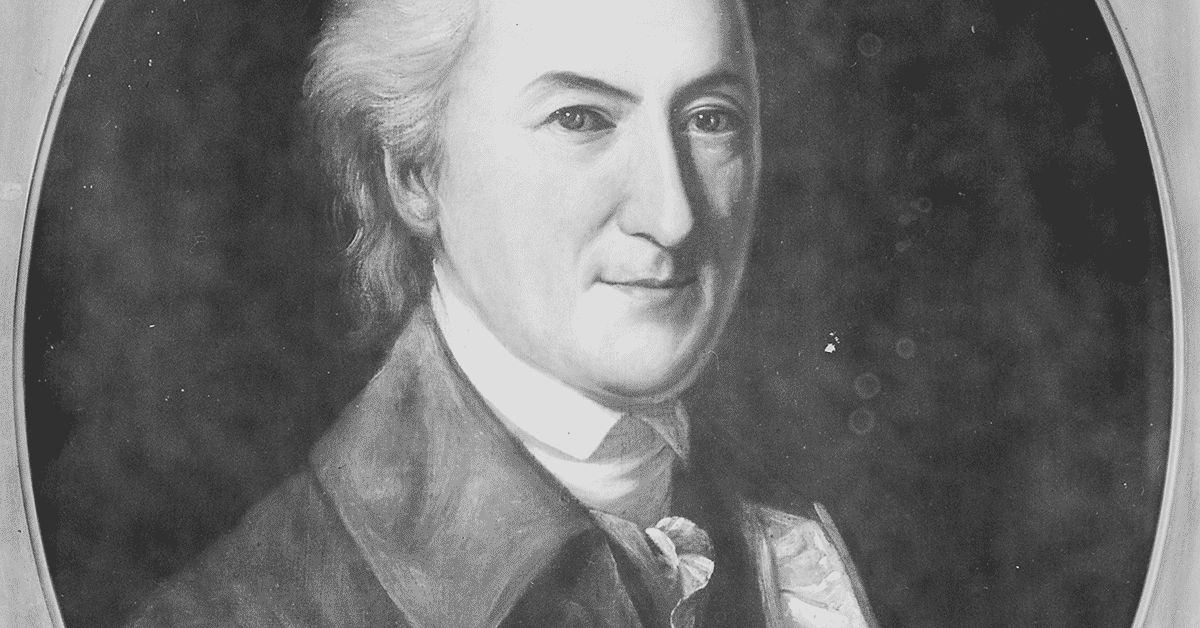Like James Madison, the subject of the last essay in this series, John Dickinson was one of those Founders about whom it could be said, “Without him, we probably would not have a Constitution.” However, Madison’s contribution is justly renown, while Dickinson’s has been unfairly overlooked.
Testifying to the proposition that Dickinson should get more credit was Forrest McDonald, the eminent 20th century constitutional historian I mentioned in the previous essay. McDonald ranked Dickinson as the most underrated of all the Founders. McDonald made that assessment in 1985, and when Dickinson’s convention notes came to light in 1987, they supported it.
In the first installment, I described the Founding-era political spectrum as ranging from unreconstructed Tories, through high nationalists, moderate nationalists, centrists, conditional Federalists, to firm Anti-Federalists. Dickinson was a leading centrist.
Many specific clauses in the finished Constitution reflected his ideas. It was his wisdom, moreover, that reminded the framers that in writing a constitution they couldn’t indulge their political fancies. Rather, they had to consider what had worked in the past and what the general public would accept.
Personal Life
Born on Nov. 8, 1732, Dickinson was nine months younger than George Washington. His first home was in Maryland, but the family soon moved to Kent County, Delaware, near Dover. You can visit the family homestead today.
Dickinson was home-schooled. His education featured the typical heavy dose of Greco-Roman classics, and he retained a love for the classics all his life. As was true of Madison, John Adams, and Ben Franklin, he was not only a man of action, but also deeply intellectual. His writings are rich with references to thinkers profiled in my “Ideas that formed the Constitution” series: Aristotle, Polybius, Cicero, Tacitus, John Locke, and others.
Dickinson decided he wanted to be a lawyer. From 1750 to 1753, he clerked at a leading Philadelphia law firm, and then spent four years at the Middle Temple—one of the four “Inns of Court” that trained English barristers (trial lawyers). While in London, he composed a series of letters to his father describing life and study there. The letters show he was quick to recognize the talent of a young Scottish advocate named William Murray. Dickinson’s youthful judgment was vindicated when Murray, later known as Lord Mansfield, became the greatest of all Britain’s chief justices.
When Dickinson returned to America in 1757, he entered law practice in Philadelphia. In the ensuing years, he split his public life between Delaware and Pennsylvania.
Dickinson came from Quaker stock and, although he was not formally observant, in accordance with Quaker views he liberated all his slaves. At the Constitutional Convention, he said it was “inadmissible on every principle of honor & safety that the importation of slaves should be authorized to the States by the Constitution.”
Dickinson seems to have had a magnetic personality, because people repeatedly entrusted him with political offices, whether he sought them or not. Physically, he was unlike the short stocky Adams and the diminutive Madison: He was tall and very lean. Like Madison, he suffered from fragile health, but through careful management enjoyed a comparatively long life. He died on Feb. 14, 1808, at the age of 75.
Public Career Before the Constitutional Convention
At age 26, Dickinson won a seat in the lower house of the Delaware legislature. In his second term, his colleagues chose him as speaker. But Philadelphia was where he was practicing law, and in 1762, he ran for the Pennsylvania legislature and was elected. While serving there, he carried on a celebrated battle over Pennsylvania’s colonial charter—courageously opposing Benjamin Franklin’s dominant state political faction. Dickinson lost the battle, but later events showed that he had been correct on the issue, while Franklin and his allies had been wrong.
Dickinson’s principal speech from the colonial charter controversy still survives. It’s a remarkable performance. “A good man,” the youthful lawmaker contended, “ought to serve his country, even though she resents his services.”
In 1765, he prepared the primary draft of the Pennsylvania Assembly’s resolutions against the Stamp Act and served in the convention of colonies known as the “Stamp Act Congress.” In 1767–1768, he supported the colonial cause with a series of newspaper essays written under the title, “Letters from a Farmer in Pennsylvania.” The “Farmer letters” were celebrated both throughout America and in Europe. When the author’s identity became public, Dickinson became the second most famous American in the world, after Franklin.
From 1774 until adoption of the Declaration of Independence, he served in the First and Second Continental Congresses, and was the principal author of official congressional pronouncements. Dickinson also chaired the congressional committee that wrote the Articles of Confederation. The first draft of the Articles is in his handwriting.
After opposing the Declaration of Independence as premature, he, along with fellow Pennsylvania delegate Robert Morris, withdrew from the final congressional vote so the tally for Independence would be unanimous. Once Independence was declared, he enlisted in the American armed forces.
In 1779, however, Delaware sent him as its representative to the Continental Congress. Two years later the Delaware legislature elected him (or, more accurately, drafted him) to be state president. The following year—while he was still the president of Delaware—the Pennsylvania executive council chose him in absentia to be president of their state. Dickinson served briefly in both offices before resigning from the Delaware presidency. He remained president of Pennsylvania for a three-year term
The Constitutional Convention
By 1786, Dickinson, like most Americans, recognized the need for a stronger government. Delaware sent him to the Annapolis Convention, where he was (of course!) elected chairman. The Annapolis gathering recommended calling another interstate convention with wider powers. In response to this recommendation, the Virginia legislature called the Constitutional Convention.
Delaware chose Dickinson as one of its commissioners (delegates) to the Constitutional Convention. Although he was absent for several weeks due to illness, he remained in Philadelphia during this time, apparently supplying ideas and recommendations to his colleagues.
Only three weeks into the convention, Dickinson prepared an outline for a proposed Constitution. The outline built on Edmund Randolph’s Virginia Plan, but included many additional features the delegates eventually adopted: enumerated powers, selection of Senators by the state legislatures, a minimum age of 30 for Senators, rotating elections, restrictions on the states issuing money, guarantees of trial by jury and habeas corpus, and the embryo of what became the Necessary and Proper Clause (Article I, Section 8, Clause 18).
Naturally, the plan also included some ideas not ultimately adopted, such as an executive branch headed by three persons instead of one.
One of Dickinson’s most important constitutional contributions was his role in developing the concept later known as “dual sovereignty,” by which the central government would have sovereignty as to enumerated (listed) subjects and the states would be sovereign as to all other matters. Dickinson thought the states should be equally represented in the Senate, and he envisioned states actively checking the federal government—a process Madison later denoted “interposition” (pdf).
In an earlier essay, I quoted Dickinson’s convention speech in which he compared the prospective federal system to the balance between the sun and the planets in the solar system. More typically, Dickinson resorted to history, tradition, and prudence. In some ways his thought anticipated the later writings of the British parliamentarian Edmund Burke, “the father of modern conservatism.”
A good illustration is Dickinson’s Aug. 13, 1787 convention floor speech. In the Anglo-American tradition, only a legislature’s lower house could initiate bills imposing taxes. Some of the convention’s participants argued for abandoning that tradition. Here is Dickinson’s response as reported by Madison. (I have cleaned up some of the punctuation and shorthand.):
“Experience must be our only guide. Reason may mislead us. It was not reason that discovered the singular and admirable mechanism of the English Constitution. It was not reason that discovered or ever could have discovered the odd and (in the eye of those who are governed by reason) the absurd mode of trial by jury. Accidents probably produced these discoveries, and experience has given a sanction to them ….
“And has not experience verified the utility of restraining money bills to the immediate representatives of the people? … Shall we oppose to this long experience, the short experience of 11 years [i.e., 1776 to 1787] which we had ourselves, on this subject? All the prejudices of the people would be offended by refusing this exclusive privilege to the House of Representatives, and these prejudices should never be disregarded by us when no essential purpose [is] to be served.
“When this [Constitution] goes forth, it will be attacked by the popular leaders. ‘Aristocracy’ will be the watchword; the Shibboleth among its adversaries. Eight states have inserted in their constitutions the exclusive right of originating money bills in favor of the popular branch of the legislature. Most of them, however, allow[] the other branch to amend. This … would be proper for us to do.”
Assisted by Edmund Randolph, Dickinson won this argument. The result was the Origination Clause (Article I, Section 7, Clause 1), which provides that only the House of Representatives can initiate new taxes (pdf).
During the ratification debates, the Origination Clause proved to be a lifesaver. Just as Dickinson predicted, opponents assailed the Constitution as being too aristocratic. If the Origination Clause had not been available to rebut that charge, the document may never have been ratified.
The Ratification Fight
Still contending with ill-health, Dickinson left the convention shortly before the Constitution was signed. He deputized his Delaware colleague, George Read, to sign for him.
Dickinson’s two home states, Delaware and Pennsylvania, became the first and second to ratify. When the pace of ratification slowed, Dickinson once more took up his famous pen and composed a series of essays supporting the Constitution. The pseudonym he chose was “Fabius,” the famous Roman general whose guerilla tactics kept Hannibal at bay.
The Fabius essays were distributed nationwide.
Conclusion
Like Madison, John Dickinson played crucial roles at several stages of constitution-making: creating background institutions (such as the Articles of Confederation), drafting the document, and promoting ratification.
Far more than Madison, however, Dickinson impressed his specific ideas into the text of the Constitution. You can find more information in my longer scholarly article, “The Constitutional Contributions of John Dickinson” (pdf).
Read prior installments in this series here: first, second, third.




